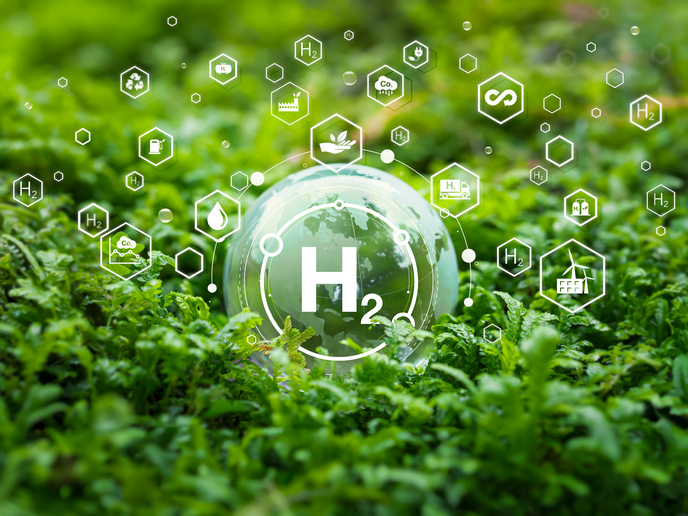Solid-state hydrogen storage facilitates energy transition
Efficient storage is key to the energy transition, by enabling sustainably produced energy to be captured when it is produced, and then released when required. “Energy can be stored in different ways,” explains HyCARE project coordinator Marcello Baricco from the University of Turin in Italy. “Hydrogen is one solution. In this way, electrical power is converted into hydrogen, and released again by using the gas as fuel in a combustion engine or fuel cell.”
Solid-state hydrogen storage tank
The main objective of the HyCARE project was to develop a prototype solid-state hydrogen storage tank, based on an innovative concept. The system is designed to work like this. First, energy produced through renewable sources – such as sun and wind – is used to produce hydrogen from water through an electrolyser. This gas is then stored in a tank, using metal hydrides. When pressurised, these metals bind strongly with hydrogen, enabling them to conveniently store hydrogen. The hydrogen can then be used to supply a fuel cell, to produce electricity. “A heat storage system is also present,” says Baricco. “The heat, collected from processes, can be used to support the release of hydrogen from the metal hydrides.” The project started with materials development and characterisation, and the design of the tank system. Companies within the consortium then provided key components, and took care of construction. Finally, the prototype was commissioned and tested to verify its behaviour at pilot scale.
Pilot plant demonstrates efficient energy storage
The HyCARE project team was able to develop and validate this solid-state hydrogen storage tank, with the capacity to store up to 46 kilogrammes of hydrogen. “This pilot plant enabled us to demonstrate that achieving efficient energy storage with a solid-state hydrogen carrier is possible at a large scale,” notes Baricco. “This was possible thanks to a highly diverse consortium. This was composed of research institutes, two SMEs, and two large corporations working in the materials and energy sectors.” Project partners also conducted an environmental and economic analysis of the entire HyCARE system. This showed that the HyCARE system was greener than existing alternatives, in part because it uses the heat generated during processes to support the release of energy. “Other advantages of the HyCARE system include temperature stability, even for long standby periods,” adds Baricco. “We showed that this is an environmentally friendly, low-cost technology.”
Accelerating the clean energy transition
The project team believe that this is just the start of implementing solid-state hydrogen storage technology. Following the success of the prototype, the HyCARE consortium has signed a joint ownership agreement to proceed with further testing. Ongoing research will also be conducted on commercial feasibility. “Our results confirmed the advantages of using hydrogen carriers based on metal hydrides,” says Baricco. “Large quantities of hydrogen can be stored in small volumes, and the whole process made more efficient.” The hope now is that the success of the project will provide a meaningful contribution to the deployment of hydrogen technology, and help to accelerate the clean energy transition.
Keywords
HyCARE, hydrogen, renewable, energy, electrical, fuel, combustion, hydrides



